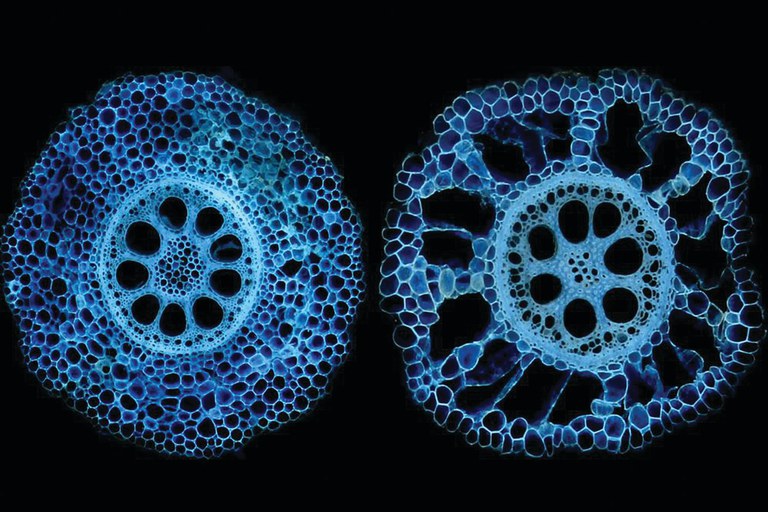Posted: November 30, 2023
Discovery of root anatomy gene may lead to breeding more resilient corn crops

Cross sections of corn roots showing genetic variation for aerenchyma formation, which converts living cells to air space. Now that researchers have found the gene associated with the phenotype, it can be a plant-breeding target. Photo: Tania Galindo Castaneda
A new discovery, reported in a global study that encompassed more than a decade of research, could lead to the breeding of corn crops that can withstand drought and low-nitrogen soil conditions and ultimately ease global food insecurity, according to a Penn State-led team of international researchers.
In findings published in the Proceedings of the National Academy of Science, the researchers identified a gene encoding a transcription factor — a protein useful for converting DNA into RNA — that triggers a genetic sequence responsible for an important trait enabling corn roots to acquire more water and nutrients.
That observable trait, or phenotype, is called root cortical aerenchyma and results in air passages forming in the roots, according to research team leader Jonathan Lynch, distinguished professor of plant science. His team at Penn State has shown that this phenotype makes roots metabolically cheaper, enabling them to explore the soil better and capture more water and nutrients from dry, infertile soil.
Identifying the genetic mechanism behind the trait creates a breeding target, noted Lynch, whose research group in the College of Agricultural Sciences has been studying root traits in corn and beans grown around the world for more than three decades, with the aim of improving global crop performance.
This latest research was spearheaded by Hannah Schneider, formerly a doctoral student and then postdoctoral scholar in the Lynch lab, now assistant professor of crop physiology at Wageningen University & Research, Netherlands. In the study, she used powerful genetic tools developed in previous research at Penn State to accomplish "high-throughput phenotyping" to measure characteristics of thousands of roots in a short time.
Employing technologies such as Laser Ablation Tomography and the Anatomics Pipeline, along with genome-wide association studies, she found the gene — a "bHLH121 transcription factor" — that causes corn to express root cortical aerenchyma.
For Lynch, who plans to retire from the Department of Plant Science faculty at the end of this year, this research is the culmination of 30 years of work and leaves a legacy with the potential to strengthen global food security.
—Jeff Mulhollem
Features
Fostering Forests
Across the United States, forests face unprecedented threats, and scientists in Penn State's College of Agricultural Sciences are conducting novel and complex research to conserve them.
Buzzing With Purpose
Community scientists work to protect Pennsylvania's wild bees
Conservation Reimagined
Exploring new approaches to cope with a changing climate


